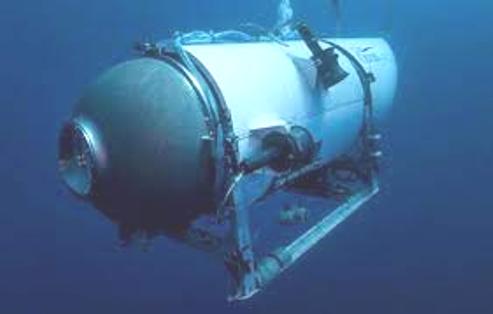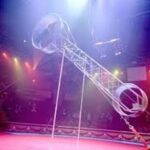Titanic: More Sounds Heard As US Other Countries Join Search For Missing Sub
LAGOS JUNE 22ND (NEWSRANGERS)-The world seems to be watching the daring rescue effort for the Titan submersible as crews from across the globe join in the days-long search.
At a press conference Wednesday, the U.S. Coast Guard updated the search and rescue mission for the vessel, which went missing Sunday, as crews remain determined to find it. The most recent update was that underwater noises in the search area were detected by a Canadian P-3 aircraft on Tuesday and Wednesday, according to the USCG.
“The noises have been described as banging noises,” said Carl Hartsfield, director of the Woods Hole Oceanographic Institution, at the presser.
Launched the morning of June 18 by the Polar Prince, a Canadian research vessel, the Titan was visiting the site of the Titanic’s wreckage in the Atlantic Ocean. The surface vessel lost contact with the submersible about an hour and 45 minutes into the dive, approximately 900 miles east of Cape Cod and 400 miles southwest of Newfoundland’s capital city, St. John’s, according to the USCG.
The Coast Guard is leading the mission, but several nations and private companies have provided their services to help rescue the five people inside the vessel.
“This is a complex search effort, which requires the use of subject matter expertise and specialized equipment,” Coast Guard Capt. Jamie Frederick, the response coordinator from the First Coast Guard District, told reporters Tuesday.
U.S. forces take the lead
The U.S. Air Force and Navy have joined the Coast Guard in the rescue mission for the Titan. Three Air Force cargo planes delivered winches, cables and unmanned vehicles capable of going 19,000 feet underwater to the airport in St. John’s.
The military has sent aircraft, salvage equipment and ships to the remote part of the Atlantic Ocean. The Air National Guard has assisted as well.
According to Military.com, the Navy sent a Flyaway Deep Ocean Salvage System, or FADOSS, to help with search and rescue efforts.
A FADOSS is described as a “portable motion-compensated lift system connected through the ship’s crane boom” that can be used to bring objects up from the ocean floor.
Canadian search vessels
While the P-3 aircraft has been investigating the noises it detected, the Royal Canadian Navy has shipped in the HMCS Glace Bay, which is equipped with a six-person mobile hyperbaric recompression chamber.
But that ship is not expected to arrive until midday Thursday, even as U.S. Coast Guard officials say the passengers in the submersible have a limited supply of oxygen.
The Canadian Coast Guard also sent the CCGS John Cabot, a scientific research vessel with sonar search capabilities. And, according to Radio Canada International, two other Canadian Coast Guard ships are nearby in St. John’s to help load equipment.
Deep Energy vessel from the Bahamas
Deep Energy, a Bahamian research vessel, arrived at the scene around 7 a.m. Tuesday and began search operations with a remotely operated vehicle (ROV). The Deep Energy is a large ship capable of delivering pipes and cables at depths of up to 3,000 meters (9,800 feet).
The vessels may be able to help locate the lost sub, which could be at 3,800 meters (12,500 feet) below, near the wreckage of the Titanic.
France sends ship
The French are also helping rescue efforts by sending the research vessel L’Atalante — managed by the Ifremer research institute — which is capable of getting to the depths needed, according to the French government.
“It carries the Victor 6000 autonomous robot, capable of descending to a depth of 6,000 meters, beyond the 3,800 meters of the wreck’s position,” Ifremer said. The ship is expected to arrive Wednesday evening.
Woods Hole Oceanographic Institution
The Massachusetts-based Woods Hole Oceanographic Institution is important in joining the mission, and for good reason: It was part of the original expedition that found the wreckage of the Titanic nearly 40 years ago.
The nonprofit said it’s not able to help physically, but its researchers and engineers are providing expertise to the responders.
At the press conference, Hartsfield said it was difficult to discern the source of noises from the P-3 aircraft but said the world’s best people in this industry are analyzing the data.
“They have to put the whole picture together in context, and they have to eliminate potential man-made sources other than the Titan,” he said.
Yahoo/News
Short URL: https://newsrangers.com/?p=110347































